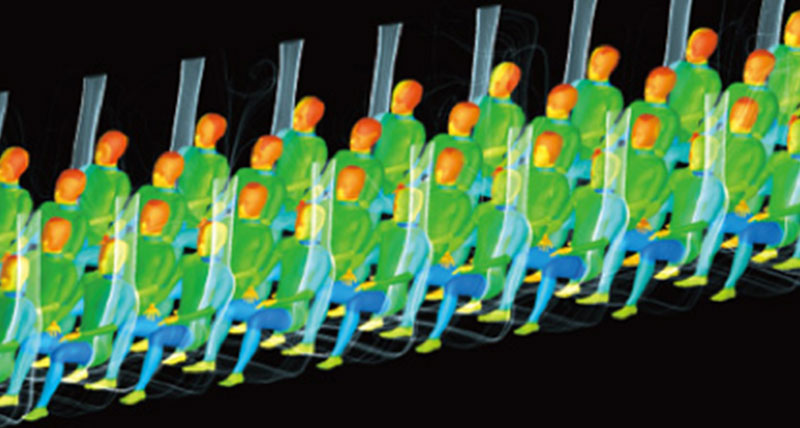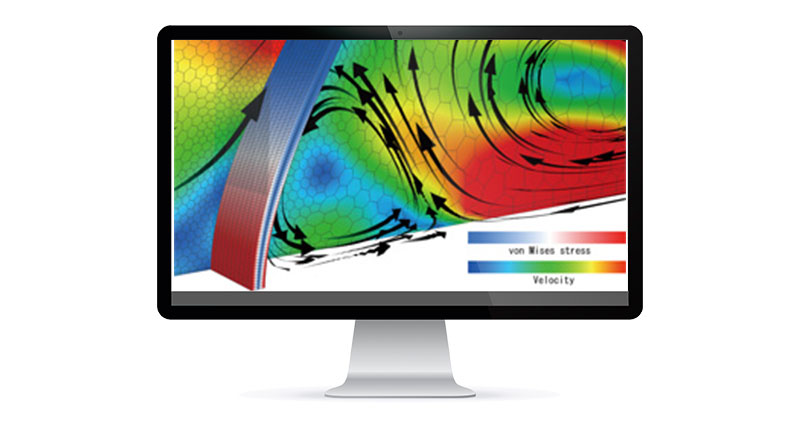Aircraft cabin airflow and passenger thermal comfort
Ensuring passenger experience by simulating airflow, temperature and humidity in aircraft cabins with Computational Fluid Dynamics (CFD).
Contact us

As aerospace manufacturers increasingly compete on passenger experience, cabin designers must take account of every possible factor impacting the aircraft environment – whether on the ground or in flight.
To understand how to manage the cabin temperature climate control and ensure passenger comfort, aircraft operators need insight into the related behaviours of airflow, temperature and humidity under various conditions. However, the environmental conditions by themselves are only one part of the equation. For a complete picture the human element also needs to be considered, so simulation and analysis of the cabin environment must account for the thermal impact of the passengers themselves.
Hexagon’s computational fluid dynamics (CFD) software portfolio includes solutions with a joint system thermoregulation model function ideal for simulating passenger thermal comfort. This function can be used to perform human body thermoregulation analysis in non-uniform thermal environments, such as an aircraft cabins, which are difficult to evaluate using traditional thermoregulation indices. Accounting for a number of human heat exchange factors including breathing and perspiration, it enables calculation of actual body temperatures relative to the airflow and other environmental conditions for greater insight into passenger comfort.
Hexagon’s CFD solutions can also be used to simulate the behaviour of smoke inside the cabin, offering vital safety insights for optimising emergency response plans.
To understand how to manage the cabin temperature climate control and ensure passenger comfort, aircraft operators need insight into the related behaviours of airflow, temperature and humidity under various conditions. However, the environmental conditions by themselves are only one part of the equation. For a complete picture the human element also needs to be considered, so simulation and analysis of the cabin environment must account for the thermal impact of the passengers themselves.
Hexagon’s computational fluid dynamics (CFD) software portfolio includes solutions with a joint system thermoregulation model function ideal for simulating passenger thermal comfort. This function can be used to perform human body thermoregulation analysis in non-uniform thermal environments, such as an aircraft cabins, which are difficult to evaluate using traditional thermoregulation indices. Accounting for a number of human heat exchange factors including breathing and perspiration, it enables calculation of actual body temperatures relative to the airflow and other environmental conditions for greater insight into passenger comfort.
Hexagon’s CFD solutions can also be used to simulate the behaviour of smoke inside the cabin, offering vital safety insights for optimising emergency response plans.
Our solutions
Explore Hexagon solutions for simulating cabin airflow and passenger thermal comfortThermo-fluid analysis software
scFLOW thermo-fluid analysis software enables the simulation of human body temperature in response to airflow and cabin conditions.
Case studies
See how Hexagon solutions are used for simulating thermal comfortSimulating thermal comfort
Read how researchers at Waseda University used CFD to ensure environmental standards by predicting and evaluating human thermal comfort.


